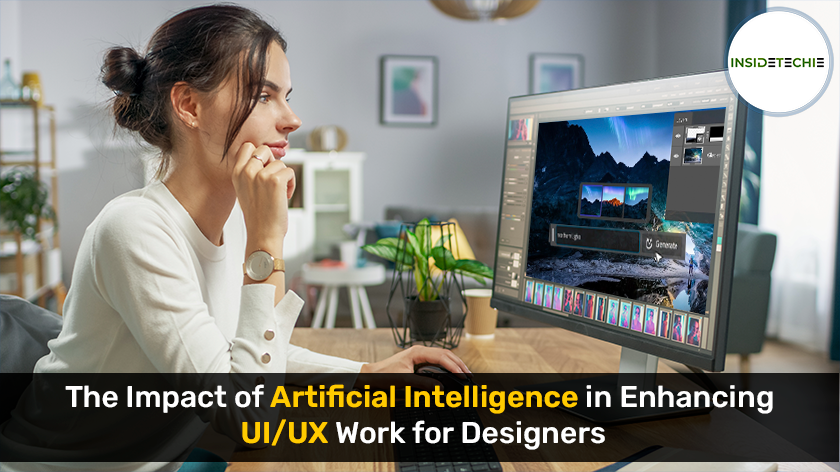In the dynamic landscape of user interface (UI) and user experience (UX) design, the integration of artificial intelligence (AI) has brought about a transformative wave, shaping the way designers approach their work. This fusion of creativity and technology is not merely a trend but a powerful tool that holds the potential to revolutionize the design process. Let’s delve into the ways AI is leaving a lasting impact on UI/UX work, paving the way for innovative and user-centric design solutions.
1. Data-Driven Design Decisions
AI empowers UI/UX designers by providing deep insights into user behavior and preferences. By analyzing vast amounts of user data, AI algorithms can identify patterns and trends, helping designers make informed decisions. This data-driven approach ensures that design choices are based on real user interactions, resulting in interfaces that are not only visually appealing but also highly functional and intuitive.
2. Personalized User Experiences
Tailoring user experiences to individual preferences is a key goal for UI/UX designers. AI plays a crucial role in achieving this by personalizing content and interfaces based on user data. From recommending personalized features to adapting layouts according to user habits, AI enhances user engagement and satisfaction. The result is a more immersive and customized experience for each user.
3. Automated Prototyping and Testing
AI-driven tools have significantly streamlined the prototyping and testing phases of UI/UX design. Designers can leverage AI to automatically generate prototypes based on initial sketches or wireframes, saving time and effort. Additionally, AI facilitates automated testing, allowing designers to identify potential issues and optimize designs more efficiently. This accelerated process enhances productivity and ensures a faster time-to-market for products.
4. Enhanced Creativity with Generative Design
Generative design, a subset of AI, introduces a new dimension to the creative process. UI/UX designers can use generative design algorithms to explore a multitude of design possibilities based on specified parameters. This not only sparks creativity but also provides designers with alternative solutions they might not have considered. The collaboration between human creativity and AI-driven generative design leads to innovative and visually stunning outcomes.
5. Efficient Workflow with AI-Powered Design Tools
AI has given rise to a new generation of design tools that significantly enhance the efficiency of UI/UX workflows. These tools often feature smart assistants, automated tasks, and predictive capabilities, allowing designers to focus more on the creative aspects of their work. The integration of AI-powered tools minimizes repetitive tasks, boosts productivity, and encourages a more collaborative and streamlined design process.
Is AI Set to Replace UX/UI Design?
In the tech world, some view artificial intelligence (AI) as a potential threat to human expertise. While AI shows promise in automating aspects of UX/UI design, it’s essential to recognize that completely replacing the human touch requires more than automation. Here’s why AI is unlikely to replace UX/UI design:
- Creativity and Human Intuition:
AI excels at pattern recognition and data analysis but falls short in understanding human creativity, empathy, and emotion—fundamental elements of design.
- Complex problem solving:
AI can suggest design templates and generate ideas, but UX/UI designers excel in tackling intricate challenges beyond standard patterns. Their role involves synthesizing information, considering multiple perspectives, and providing innovative solutions—skills deeply rooted in human expertise.
- Ethical Considerations:
AI raises ethical concerns, including biases, privacy issues, and environmental sustainability. Tech professionals, particularly UX/UI designers, play a pivotal role in ensuring a fair and transparent use of artificial intelligence.
- Collaboration and Communication:
UX/UI designers are not only responsible for their designs but also for effective communication and collaboration with cross-functional teams, stakeholders, and clients. Interpersonal skills, such as communication, presentation, negotiation, and human understanding, remain vital for the success of digital projects or services.
While AI can enhance certain aspects of the design process, the distinct human qualities embedded in creativity, complex problem-solving, ethical considerations, and effective communication continue to make UX/UI designers indispensable in the ever-evolving landscape of technology and design.
In conclusion, the impact of artificial intelligence on UI/UX design is profound and multifaceted. From data-driven decision-making to personalized user experiences and automated workflows, AI is reshaping the design landscape. Embracing these advancements not only empowers designers to create more user-centric interfaces but also positions them at the forefront of innovation in the ever-evolving field of UI/UX design. As AI continues to evolve, its role in design is set to become even more integral, pushing the boundaries of what is possible in the realm of digital experiences.












